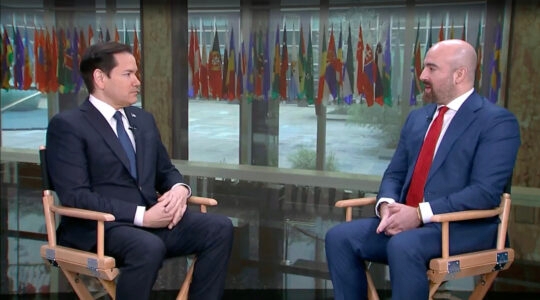LOS ANGELES (JTA) — More Americans express sympathy for Israel than for the Palestinians, according to a new survey.
A poll released by the Pew Research Center for People & the Press found that 34 percent of Americans sympathize with Israel “a lot,” as well as 32 percent who sympathize “some,” versus 11 percent who sympathize “a lot” with the Palestinians and another 35 percent who sympathize with them “some.” Thirty-seven percent sympathize with both sides, while 18 percent sympathize with neither.
As has been common with recent surveys of American public opinion surrounding the conflict in Gaza, responses break down differently along partisan lines. Seventy-seven percent of Republicans expressed “a lot” or “some” sympathy for Israel, versus 66 percent of independents and 62 percent of Democrats. By contrast, only 29 percent of Republicans expressed “a lot” or “some” sympathy for the Palestinians, while independents were at 50 percent and Democrats at 57 percent.
There were likewise partisan divides on opinions of President Obama’s handling of the Middle East situation.
Just 10 percent of Republicans thought he was favoring Israel too much, versus 45 percent who said he favored the Palestinians too much and 32 percent who said he struck the proper balance. Independents were somewhat more favorable, with 17 percent saying he had overly favored Israel, 22 percent that he had favored the Palestinians too much, and 45 percent saying he had struck the right balance.
Democrats by far were the most supportive of the president’s policy, with 71 percent saying he was striking the right balance. Twelve percent said he favored Israel too much and 6 percent said he favored the Palestinians too much.
Young people were the most optimistic about the two sides reaching a peaceful two-state solution, with 53 percent of 18- to 29-year-olds saying they thought it was possible, versus 42 percent who did not. This compared with a negative overall sentiment among adults, with just 43 percent saying such a solution was possible versus 48 percent saying it was not. Each successively older age cohort was successively less optimistic that a solution could be reached.
JTA has documented Jewish history in real-time for over a century. Keep our journalism strong by joining us in supporting independent, award-winning reporting.





